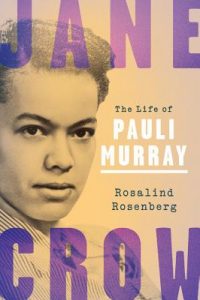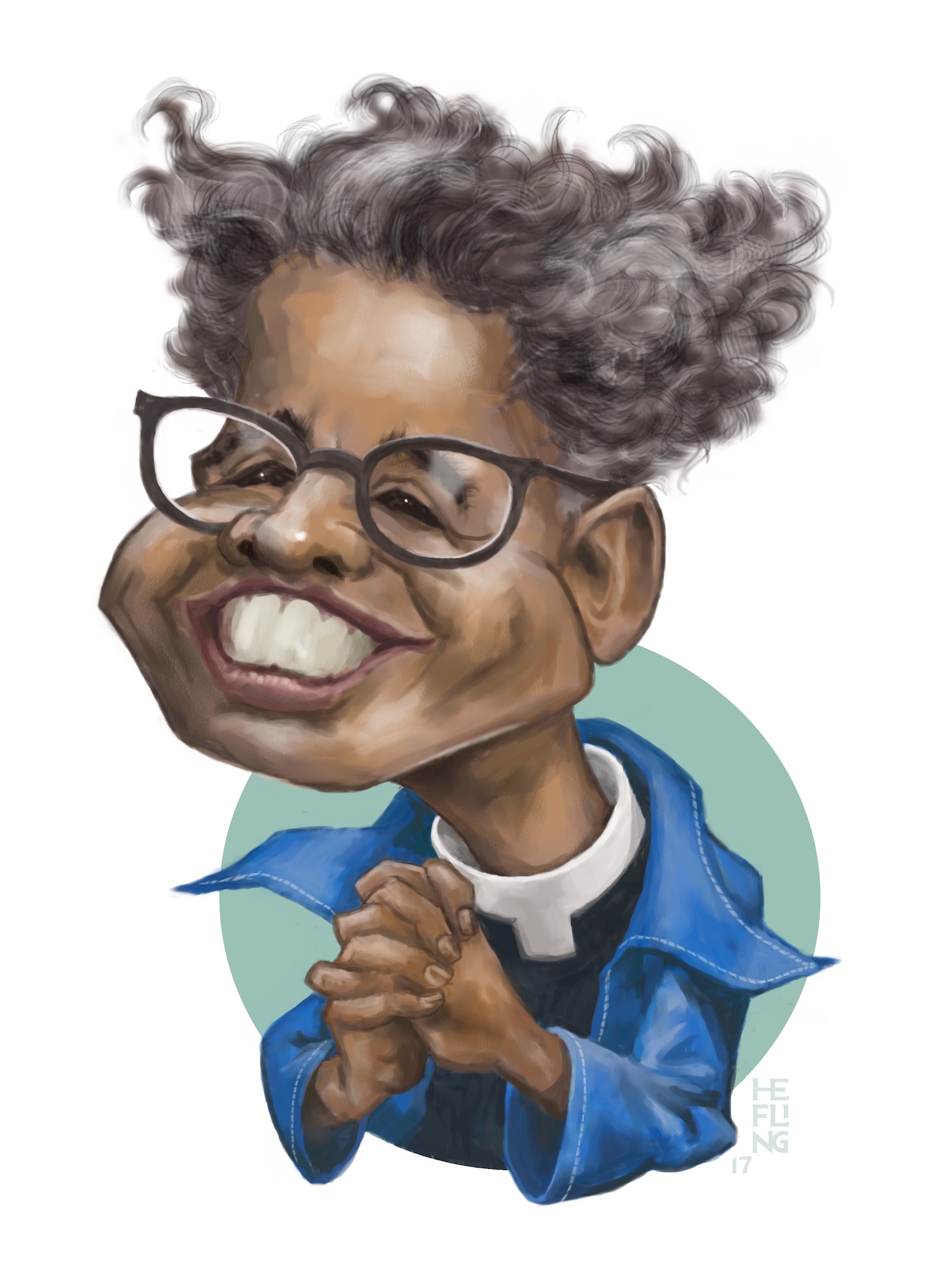 Jane Crow: The Life of Pauli Murray
Jane Crow: The Life of Pauli Murray
by Rosalind Rosenberg
Oxford. 512 pages, $29.95
PAULI MURRAY was a civil rights activist in mid-century America, a lawyer who fought Jim Crow laws, among other injustices, and the first African-American woman to be ordained as an Episcopal priest. In Jane Crow, Rosalind Rosenberg delineates Murray’s education, career, and personal life in the context of American history. We see Murray as a young woman struggling against Jim Crow laws in the South, becoming a member of the Communist Party Opposition, and working for the Negro People’s Committee to Aid Spanish Refugees (NPC). While picketing in Rhode Island in 1940, she was arrested by the police and taken to Bellevue Hospital for psychiatric treatment. A month later, she was arrested for creating a disturbance on a Greyhound bus in Virginia and served a short jail term. Her efforts to stay the execution of Odell Waller, a black sharecropper who’d shot his employer for refusing to give Waller his share of their wheat crop, while unsuccessful, earned her an invitation to the White House for tea with Eleanor Roosevelt.
Anna Pauline Murray was born in Baltimore in 1910, the fifth of seven children. Mixed race from both her mother’s and father’s sides, her ancestors included both slaves and slave owners. Her family was intelligent and well-educated but subject to nervous breakdowns. Murray was orphaned at age three when her mother died of a massive cerebral hemorrhage during a seventh pregnancy. Soon after that, her father Will, always a violent man, now left with seven children, stopped going to work, paying the mortgage, and buying groceries, relying instead on hunting. Eventually, relatives intervened and had him committed to a mental hospital. The children were scattered among several relatives. Pauli went to Durham, North Carolina, to live with her mother’s sisters, Sally and Pauline, both teachers, who were stabilizing forces in her life.
Before entering Hunter College, New York City’s public college for women, she had to take another year of high school as a result of being educated in a segregated school system that didn’t offer the classes required for college. Later on, she was rejected by North Carolina’s law school due to her race and by Harvard Law School because she was a woman, regardless of how many references she produced. She eventually earned her law degree at Howard University and the University of California.
Even in childhood, Pauli experienced gender identity issues, believing herself to be a  male in a female body. As an adult, she sought hormone treatments several times to no avail. She insisted she wasn’t a lesbian, claiming she wanted a woman the way a man wants a woman. Through most of her adult life she had close female companions, but she moved around so much for education and work that it was difficult to sustain a relationship. She often suffered from depression and checked into mental hospitals periodically. Her longest relationship was with Irene Barlow, whom she met at the Paul, Weiss law firm. They remained close thereafter, and when Irene died of cancer in 1973, Murray’s grief was inconsolable.
male in a female body. As an adult, she sought hormone treatments several times to no avail. She insisted she wasn’t a lesbian, claiming she wanted a woman the way a man wants a woman. Through most of her adult life she had close female companions, but she moved around so much for education and work that it was difficult to sustain a relationship. She often suffered from depression and checked into mental hospitals periodically. Her longest relationship was with Irene Barlow, whom she met at the Paul, Weiss law firm. They remained close thereafter, and when Irene died of cancer in 1973, Murray’s grief was inconsolable.
In 1963, she became one of the first to criticize the sexism in the civil rights movement. Murray recognized that discrimination based on race and on gender were closely related, and African-American women carried a double burden. She coined the term “Jane Crow” to characterize the status of women in general and black women in particular. Murray worked with both women’s groups and civil rights organizations, advancing the use of the Fourteenth Amendment, the Equal Protection clause, and litigation in general to end both racial and gender discrimination. Among her legal victories was White v. Crook, which she argued (with Dorothy Kenyon) before the U.S. Court of Appeals for the Fifth Circuit, receiving a decision that guaranteed women the right to serve on juries.
Murray compiled a book, State’s Laws on Race and Color, that Thurgood Marshal called the “Bible” of civil rights litigation; and he ordered a copy for everyone on his staff. She brushed shoulders with the major civil rights leaders of her time. After teaching law for a few years at Brandeis, she switched gears again (in 1973) to attend the General Theological Seminary and was among the first women to be ordained as an Episcopal priest (in 1977). While not as well known as some other feminists and civil rights leaders, Pauli Murray was an actor in two of the great social movements of the last century. This book provides, in intricate detail and at considerable length, a fresh perspective on this crucial slice of history.
Martha Miller is a Midwestern writer of plays, short fiction, reviews, articles, and novels.






